
Soweto: Heartbeat of Johannesburg's Rich History and Vibrant Culture
Discover Soweto: A Journey Through South Africa’s Rich History, Culture, and Modern Thrills in the Heart of Johannesburg.
Soweto, short for South Western Townships, is a neighbourhood that embodies the soul of Johannesburg. Known for its deep historical significance and vibrant cultural landscape, Soweto is a must-visit destination for any tourist. It was the epicenter of the fight against apartheid, and today, it stands as a testament to the resilience and spirit of its people. Walk through Vilakazi Street, the only street in the world that was once home to two Nobel Prize winners, Nelson Mandela and Desmond Tutu. The street is lined with museums, restaurants, and historical sites that tell the story of the struggle for freedom. There, you can visit the Mandela House Museum to get a glimpse of the life of South Africa's first black president. For a taste of local culture, spend some time at the bustling markets where you can find traditional crafts, clothing, and delicious street food. The Hector Pieterson Museum offers a poignant look at the student uprisings of 1976, bringing history to life through photographs, videos, and personal testimonies. Soweto is not just about history; it is also a hub of modern South African culture. The Orlando Towers offer a variety of adrenaline-pumping activities, including bungee jumping and abseiling, with a backdrop of vibrant murals painted by local artists. The nightlife in Soweto is electric, with live music venues and clubs that keep the energy high until the early hours of the morning.
Local tips in Soweto
- Visit Vilakazi Street early in the morning to avoid crowds and get the best photos.
- Try traditional street food like bunny chow and kota for an authentic taste of Soweto.
- Hire a local guide for a deeper understanding of Soweto’s historical sites and personal stories.
- Keep small change handy for tipping street performers and local vendors.
- Wear comfortable shoes; many of the most interesting sites are best explored on foot.
Soweto: Heartbeat of Johannesburg's Rich History and Vibrant Culture
Soweto, short for South Western Townships, is a neighbourhood that embodies the soul of Johannesburg. Known for its deep historical significance and vibrant cultural landscape, Soweto is a must-visit destination for any tourist. It was the epicenter of the fight against apartheid, and today, it stands as a testament to the resilience and spirit of its people. Walk through Vilakazi Street, the only street in the world that was once home to two Nobel Prize winners, Nelson Mandela and Desmond Tutu. The street is lined with museums, restaurants, and historical sites that tell the story of the struggle for freedom. There, you can visit the Mandela House Museum to get a glimpse of the life of South Africa's first black president. For a taste of local culture, spend some time at the bustling markets where you can find traditional crafts, clothing, and delicious street food. The Hector Pieterson Museum offers a poignant look at the student uprisings of 1976, bringing history to life through photographs, videos, and personal testimonies. Soweto is not just about history; it is also a hub of modern South African culture. The Orlando Towers offer a variety of adrenaline-pumping activities, including bungee jumping and abseiling, with a backdrop of vibrant murals painted by local artists. The nightlife in Soweto is electric, with live music venues and clubs that keep the energy high until the early hours of the morning.
Iconic landmarks you can’t miss
Mandela's House
Delve into the remarkable legacy of Nelson Mandela at his historic home in Soweto—a journey through South African heritage and resilience.

Hector Pieterson Memorial
Explore the Hector Pieterson Memorial in Johannesburg, a powerful tribute to the youth who fought for freedom during the Soweto Uprising.

Thokoza Park
Discover the lush greenery and cultural heart of Soweto at Thokoza Park, where relaxation meets community spirit.

Walter Sisulu Square
Discover the rich history and vibrant culture at Walter Sisulu Square in Soweto, a landmark of South Africa's struggle for freedom.

Dorothy Nyembe Park
Discover the serene beauty and cultural significance of Dorothy Nyembe Park in Soweto, a perfect retreat for nature lovers and history enthusiasts.

Mofolo Park
Explore the lush landscapes and vibrant community spirit of Mofolo Park, a beloved green oasis in Soweto, Johannesburg.

June 16 Memorial Acre
Explore the June 16 Memorial Acre in Soweto, a powerful tribute to the youth who shaped South Africa's fight for freedom and equality.

Oppenheimer Tower
Explore the rich heritage of Soweto at Oppenheimer Tower, a key landmark showcasing the vibrant history and culture of South Africa.

Tutu House - Soweto tours
Discover the historical significance of Tutu House in Soweto, a cornerstone of South Africa's struggle for freedom and equality.

Soweto Experience Tours and Transfers
Explore the rich culture and history of Soweto with personalized tours and unforgettable experiences in South Africa's vibrant township.

Unmissable attractions to see
Mandela's House
Discover the rich history of Nelson Mandela at his former home in Soweto, a heritage museum that celebrates the legacy of South Africa's freedom fighter.
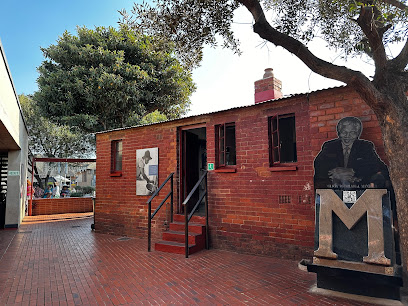
Hector Pieterson Memorial
Explore the Hector Pieterson Memorial in Soweto, a powerful tribute to the 1976 uprising and a pivotal site in South Africa's history.

Thokoza Park
Discover the beauty of Thokoza Park, a serene retreat in Soweto, perfect for relaxation and cultural immersion amidst lush landscapes.

Walter Sisulu Square
Explore Walter Sisulu Square, a vibrant cultural landmark in Soweto, celebrating South Africa's rich heritage and history.

Dorothy Nyembe Park
Explore the natural beauty and community spirit of Dorothy Nyembe Park in Soweto, a perfect destination for relaxation and local culture.

Mofolo Park
Experience the lush beauty and cultural richness at Mofolo Park, a serene oasis in the heart of Soweto, Johannesburg.
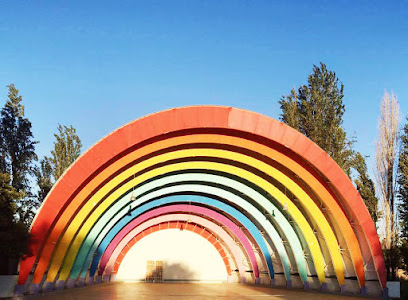
Credo Mutwa Cultural Village
Explore the rich cultural heritage and vibrant traditions of South Africa at Credo Mutwa Cultural Village in Soweto.
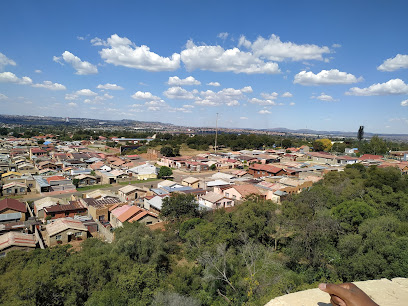
Oppenheimer Tower
Explore Oppenheimer Tower in Soweto, a captivating heritage museum offering stunning views and a rich narrative of South Africa's history.

Soweto Adventure Experience
Experience the thrill of quad biking while exploring the vibrant culture and history of Soweto, Johannesburg's iconic township.

Inn soweto tours
Explore the vibrant culture and rich history of Soweto with Inn Soweto Tours, where every corner tells a story.
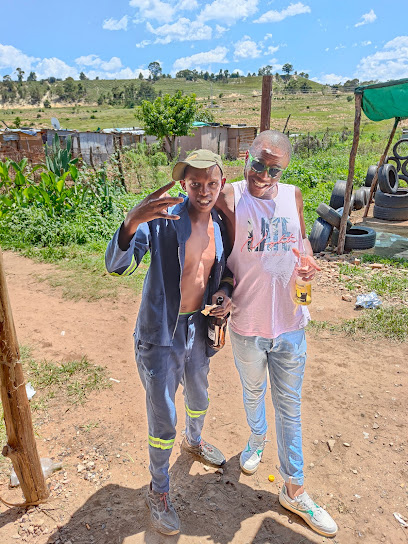
Essential places to dine
Sakhumzi Restaurant
Experience authentic South African cuisine at Sakhumzi Restaurant in Soweto - where tradition meets flavor.

Restaurant VILAKAZI
Savor authentic South African cuisine at Restaurant VILAKAZI - a family-friendly gem on the historic Vilakazi Street.

Vuyos Restaurant
Experience authentic South African cuisine at Vuyos Restaurant in Soweto - where culture meets flavor in every dish.

Wandies Place
Discover authentic South African cuisine at Wandies Place in Soweto - where flavor meets culture in every dish.

Nexdor
Experience the vibrant flavors of South Africa at Nexdor, Soweto's premier food court offering diverse culinary delights.

Robby's Place
Experience vibrant family dining at Robby's Place in Pimville Zone 5 - where delicious food meets refreshing drinks in a welcoming atmosphere.

Chez Alina Restaurant
Experience authentic South African cuisine at Chez Alina Restaurant in Soweto - a vibrant dining destination celebrating local flavors.

Okumnandi Restaurant
Discover the flavors of South Africa at Okumnandi Restaurant in Soweto - where every dish tells a story.
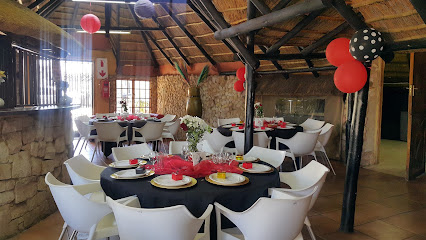
Sowetalian
Discover the unique fusion of South African and Italian cuisine at Sowetalian in Moroka, Soweto – where every dish tells a story.

QUEENIE'S KITCHEN SOUTH AFRICA, Vilikazi Street, Soweto
Experience authentic South African flavors at Queenie's Kitchen on Vilakazi Street in Soweto – where tradition meets taste.

Markets, malls and hidden boutiques
Maponya Mall
Discover the vibrant shopping experience at Maponya Mall in Soweto, a cultural hub with diverse shops and dining options.

Jabulani Mall
Experience the energy of Soweto at Jabulani Mall, a vibrant shopping center with diverse retail shops, delicious dining options, and engaging entertainment.
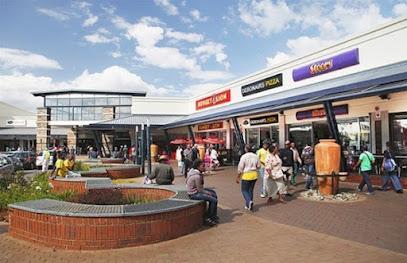
Protea Glen Mall
Experience the heart of Soweto at Protea Glen Mall, a vibrant shopping destination filled with local culture, dining, and entertainment.

Dobsonville Mall
Discover shopping, dining, and local culture at Dobsonville Mall, an iconic destination in Soweto, South Africa.

Bara Mall
Experience the heartbeat of Soweto at Bara Mall, a vibrant shopping destination filled with local culture, diverse shops, and delicious cuisine.

Sizwe Shopping Centre
Explore Sizwe Shopping Centre in Soweto for a unique shopping experience filled with local culture, diverse dining, and vibrant community spirit.

Eyethu Shopping Center
Explore the Eyethu Shopping Center in Soweto: A lively shopping mall featuring local crafts, delicious cuisine, and a taste of authentic South African culture.

GSpot Lovestyle Adult Shop Soweto
Discover a vibrant selection of adult entertainment at GSpot Lovestyle in Soweto, your go-to adult shop for DVDs and lingerie.

Soweto Big Dreamers Store
Explore the Soweto Big Dreamers Store for unique local fashion that reflects the vibrant culture and creativity of Soweto's community.

Mzansi Designers Emporium
Explore unique fashion at Mzansi Designers Emporium – where South African creativity meets contemporary style in Soweto.

Essential bars & hidden hideouts
Disoufeng Pub & Restaurant
Discover the vibrant heartbeat of Soweto at Disoufeng Pub & Restaurant, where authentic South African cuisine and culture come alive.

Social Link Pub
Discover the lively ambiance of Social Link Pub in Soweto, where great drinks and local entertainment come together for an unforgettable night out.

Rocker Fella
Immerse yourself in the vibrant nightlife of Johannesburg at Rocker Fella, where great drinks and live music create unforgettable moments.

Robby's Place
Discover Robby's Place: A vibrant bar and family restaurant in Johannesburg, blending local flavors with a lively atmosphere for an unforgettable experience.

La Casa - Pub & Grill
Experience the vibrant atmosphere of La Casa - Pub & Grill in Johannesburg, where delicious food and great drinks meet local culture.

Budapest Cocktail Bar
Discover the vibrant atmosphere of Budapest Cocktail Bar in Soweto, where innovative cocktails and delicious grill dishes create unforgettable experiences.

The Black and white pub lifestyle
Experience the vibrant essence of Johannesburg's nightlife at The Black and White Pub, where locals and tourists gather for good drinks and great company.

BK Pub and Grill
Savor the authentic taste of South African grilled cuisine at BK Pub and Grill in the heart of Soweto.
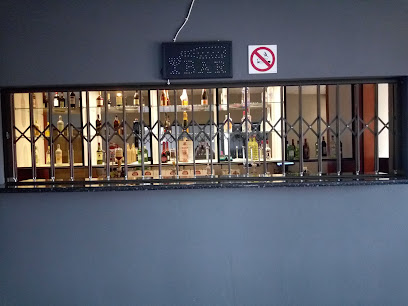
Liber City Pub
Discover the heart of Soweto at Liber City Pub, where grill flavors and vibrant culture create a memorable dining experience.

Legends Lounge Soweto
Discover the flavors of Soweto at Legends Lounge, where delicious grills meet vibrant culture for an unforgettable dining experience.

Local Phrases
-
- HelloSawubona
[sah-woo-BOH-nah] - GoodbyeHamba kahle
[HAM-bah kah-hleh] - YesYebo
[YEH-boh] - NoCha
[chah] - Please/You're welcomeNgiyacela
[ng-yah-CEH-lah] - Thank youNgiyabonga
[ng-yah-BON-gah] - Excuse me/SorryUxolo
[oo-SOH-loh] - How are you?Unjani?
[oon-JAH-nee] - Fine. And you?Ngiyaphila. Wena?
[ng-yah-PEE-lah. WEH-nah] - Do you speak English?Ukhuluma isiNgisi?
[oo-khoo-LOO-mah ee-see-NGEE-see] - I don't understandAngazi
[ahng-GAH-zee]
- HelloSawubona
-
- I'd like to see the menu, pleaseNgiyavumela ukubona iminyango, sicela
[ng-yah-voo-MEH-lah oo-koo-BOH-nah ee-mee-NYAHN-goh, see-CEH-lah] - I don't eat meatAngiyi kudla inyama
[ahng-GEE-ee koo-DLA ee-NYAH-mah] - Cheers!Oogy!
[OOH-gy!] - I would like to pay, pleaseNgiyacela ukudlala, sicela
[ng-yah-CEH-lah oo-koo-DLA-lah, see-CEH-lah]
- I'd like to see the menu, pleaseNgiyavumela ukubona iminyango, sicela
-
- Help!Usizo!
[oo-SEE-zoh] - Go away!Hamba!
[HAM-bah] - Call the Police!Biza amaphoyisa!
[BEE-zah ah-mah-poh-YEE-sah] - Call a doctor!Biza umndeni!
[BEE-zah oom-DEH-nee] - I'm lostNgizwe ngizopha
[ng-eez-weh ng-ee-ZOH-pah] - I'm illNgisilungile
[ng-ee-see-LOO-ngi-leh]
- Help!Usizo!
-
- I'd like to buy...Ngiyavumela ukuthenga...
[ng-yah-voo-MEH-lah oo-koo-THEHNG-gah...] - I'm just lookingNgicabanga kuphela
[ng-ee-chah-BAHNG-gah koo-PEH-lah] - How much is it?Kuyacela inani?
[koo-yah-CEH-lah ee-NAH-nee] - That's too expensiveLokhu kungakwazi okukhokha
[loh-khoo koo-ngah-KWAH-zee oh-koo-KOH-khah] - Can you lower the price?Ungakwenzi ukushintsha inani?
[oo-ngah-kwehn-zee oo-koo-SHEENT-shah ee-NAH-nee]
- I'd like to buy...Ngiyavumela ukuthenga...
-
- What time is it?Ngubani ixesha?
[ngoo-BAH-nee ee-GHEH-shah] - It's one o'clockKuyisikhombisa esihlanu
[koo-yee-see-khohm-BEE-sah eh-see-HLAH-noo] - Half past (10)Ngothathu
[ngoh-TAH-too] - MorningEkuseni
[eh-koo-SEH-nee] - AfternoonNtambama
[ntahm-BAH-mah] - EveningSikathi
[see-KAH-tee] - YesterdayIzolo
[ee-ZOH-loh] - TodayNamhlanje
[nahm-HLAHN-jeh] - TomorrowKusasa
[koo-SAH-sah] - 1Kunye
[koo-NYEH] - 2Kubili
[koo-BEE-lee] - 3Kuthathu
[koo-TAH-too] - 4Kune
[koo-neh] - 5Kuhlanu
[koo-HLAH-noo] - 6Isithandathu
[ee-see-tahn-dah-too] - 7Isikhombisa
[ee-see-khohm-BEE-sah] - 8Isishiyagalombili
[ee-see-shyah-gah-lohm-BEE-lee] - 9Isishiyagalolunye
[ee-see-shyah-gah-loh-LOO-nyeh] - 10Isishiyagalombili
[ee-see-shyah-gah-lohm-BEE-lee]
- What time is it?Ngubani ixesha?
-
- Where's a/the...?Kodwa kuphi...?
[kohd-wah koo-pee...] - What's the address?Iphi i-adrese?
[ee-pee ee-ah-DREH-seh] - Can you show me (on the map)?Uzokwazi ukungibonisa (emephu)?
[oo-zoh-KWAH-zee oo-koo-ngi-BOH-nee-sah (eh-MEH-poo)] - When's the next (bus)?Kuphi isikhathi esilandelayo (ibhasi)?
[koo-pee ee-see-KHAH-tee eh-see-lahn-deh-LAH-yoh (ee-bah-see)] - A ticket (to ....)Intikiti (ku ....)
[een-tee-KEE-tee (koo ....)]
- Where's a/the...?Kodwa kuphi...?
History of Soweto
-
Soweto, an acronym for South Western Townships, was established in the 1930s as a result of the apartheid policies that forced black South Africans to live in segregated areas outside Johannesburg. Originally, it began as a small township for black workers who migrated to Johannesburg in search of jobs during the gold rush. The establishment of this area was part of the broader system of racial segregation that characterized South Africa during this period.
-
On March 21, 1960, the Sharpeville Massacre occurred just outside Soweto, where police opened fire on a peaceful protest against pass laws, killing 69 people. This tragic event highlighted the brutality of the apartheid regime and galvanized international attention towards the struggle for liberation in South Africa. The massacre marked a turning point in the anti-apartheid movement, leading to increased resistance and the eventual rise of more militant groups.
-
On June 16, 1976, Soweto was the epicenter of a student-led protest against the imposition of Afrikaans as the medium of instruction in schools. The uprising began when thousands of students marched to demonstrate their opposition, leading to violent confrontations with the police. The event resulted in the deaths of hundreds of students and highlighted the injustices faced by black South Africans. The Soweto Uprising became a symbol of resistance and played a crucial role in mobilizing both domestic and international opposition to apartheid.
-
In the years following the end of apartheid in 1994, Soweto has experienced a cultural renaissance. The area is now known for its vibrant arts scene, including music, dance, and visual arts. The Soweto Gospel Choir, for instance, has gained international acclaim, while various festivals celebrate the township's rich cultural heritage. The establishment of the Hector Pieterson Memorial and Museum helps to preserve the history of the struggle against apartheid and serves as a reminder of Soweto's significant role in South Africa's journey toward democracy.
-
Today, Soweto is a thriving urban area that reflects the complexities of post-apartheid South Africa. It is home to both affluent suburbs and areas still grappling with the legacies of poverty and inequality. Key landmarks such as Vilakazi Street, known for being the only street in the world where two Nobel Laureates, Nelson Mandela and Desmond Tutu, lived, attract tourists. Development initiatives aim to uplift the community, fostering economic growth while preserving the rich history and cultural identity of Soweto.
Soweto Essentials
-
Soweto is easily accessible from various neighborhoods in Johannesburg. The most convenient way to reach Soweto is by car or taxi. The M1 and N1 highways provide direct routes to the area. Public transportation options include the Gautrain, which connects to the Soweto line at the Johannesburg station, and from there, you can take a minibus taxi or a local bus. Alternatively, the Rea Vaya bus rapid transit system operates routes that connect Soweto to the central business district.
-
Soweto is well served by public transport. The Rea Vaya bus system is a reliable and affordable way to navigate the area, with dedicated bus lanes and frequent services. Minibus taxis are also prevalent and can transport you around Soweto quickly, although they can be crowded. For a more leisurely experience, consider renting a bicycle or joining a guided bike tour to explore the neighborhood's rich history and vibrant culture.
-
While many areas of Soweto are safe for tourists, some neighborhoods experience higher crime rates, particularly around night-time. Areas like Diepkloof and parts of Orlando West may require extra caution, especially after dark. It is advisable to avoid displaying valuables and to use reputable transport options. Stick to well-lit and populated areas, and always be aware of your surroundings.
-
In case of an emergency, dial 10111 for police assistance and 10177 for ambulance services. It is advisable to have travel insurance that covers medical emergencies. For minor health issues, pharmacies are available in Soweto. Familiarize yourself with the location of the nearest hospital or medical facility in case of a serious situation.
-
Fashion: Do dress modestly and comfortably, especially when visiting local churches or cultural sites. Avoid flashy jewelry. Religion: Do respect the local customs, especially when visiting sacred places. It is advisable to cover your shoulders and knees. Public Transport: Do be polite and give up your seat to the elderly or those in need. Don't engage in loud conversations on public transport. Greetings: Do greet people with a friendly 'hello' or 'howzit.' A smile goes a long way. Eating & Drinking: Do try local street food and accept invitations to share a meal. Don't waste food or drink alcohol in public spaces unless you are in a designated area, as this is frowned upon.
-
To experience Soweto like a local, visit Vilakazi Street, where you can find Nelson Mandela's former home and Desmond Tutu's residence. Engage with local artisans at the Market on Main for handmade crafts and food. Attend a local soccer match for a vibrant atmosphere. Don't miss the Soweto Uprising Memorial for a poignant insight into the area's history. Remember to greet and engage with locals, as they are often welcoming and eager to share their stories.
Nearby Cities to Soweto
-
Things To Do in Pretoria
-
Things To Do in Lobatse
-
Things To Do in Gaborone
-
Things To Do in Butha-Buthe
-
Things To Do in Leribe
-
Things To Do in Polokwane
-
Things To Do in Molepolole
-
Things To Do in Teyateyaneng
-
Things To Do in Nelspruit
-
Things To Do in Mbabane
-
Things To Do in Malkerns
-
Things To Do in Maseru
-
Things To Do in Manzini
-
Things To Do in Bloemfontein
-
Things To Do in Mokhotlong










